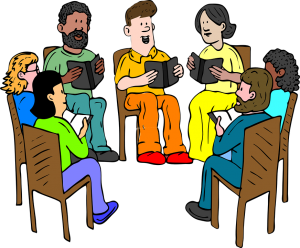
We've all heard the cliché: a picture is worth a thousand words. But with Extempore, the expression might actually have some literal truth to it! That's because our app allows teachers and students to use images to kickstart a discussion in the target language.
Obviously, an audio prompt from a teacher most closely mimics a real-life conversation, but a visual prompt can just as easily get students speaking, and, in some ways, provokes even more interesting responses from your learners. That's because a photo as a starting point can tap into a student's higher-order thinking skills, all the while strengthening their speaking abilities. By using images, you can accomplish some pretty complex (and fun!) tasks:
- 1. Description: Perhaps the easiest goal to achieve with an image prompt is the activation of vocabulary. This is especially useful for beginning and intermediate students (though it never hurts to continue to test vocabulary for more advanced learners). Simply ask your students to describe the image that they see using as much classroom vocabulary as they can. Or, to flex their grammatical muscles, ask them to describe or even narrate a situation or event related to the image that you've uploaded.
- 2. Compare and contrast: Ask students to look at the image you've uploaded to the assignment and compare and/or contrast what they see with something else. For example, in a unit on the environment, my Spanish 2 students saw a side-by-side image of a idyllic pasture next to a toxic wasteland. It was fascinating to see how they used the chapter vocabulary to compare the two images.

- 3. Interpretation: Upload a picture of a painting or other work of art. Then ask your students to interpret or analyze what they see. What colors, forms, or other elements do they see? How does the picture make them feel? What does it attempt to convey to the audience? In a unit on family, Spanish students could analyze Fernando Botero's La familia presidencial. I haven't tried that one yet, but I can't wait to see what my students might say.
- 4. Dialogue: Post an image with various people or characters then ask students, based on what they see, to invent a short dialogue that might be taking place. For example, why are the people in the image below gathering and what are they saying to each other?

- 5. Speculation/Prediction: Instead of asking your students to describe an image on Extempore, ask them to predict what might happen next based upon what they see. Or have them speculate about how the people or characters in the photo got in the situation that they're in in the first place.
- 6. Culture: As we have shown in a previous post, images can serve as a window to the target language culture, as it brings the real world to the student. A picture could serve as an eye-opening introduction to the cultural topic ("What do you think is happening in this picture?") or it could be a way to initiate a summative "report" of how much the students learned about a particular phenomenon ("Imagine that you've just returned home from your trip. Now tell your friends and family what you learned about the food in that region.").
The possibilities here are nearly endless, so this is just the tip of the iceberg! If you're already using images to spark conversation in the classroom, try using them on Extempore to provide regular spoken practice at home. You'll be amazed at how easy it is to elicit creative responses from your students.


